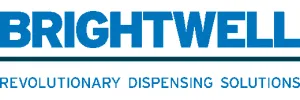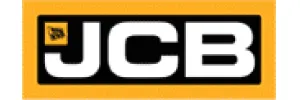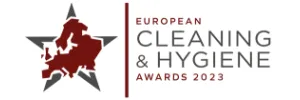News & Insights
Read the latest news from us and our clients across the globe

Posted on 27 June 2014 by adtrak.admin
Building the green economy – successfully and safely
‘Green’ jobs are on the increase as the race to create a circular economy speeds up. This brings countless economic opportunities, but it also poses new risks for recycling and waste management workers, as technology and market forces bring further changes to working methods and conditions. Tim Burnhope, Chief Innovation and Growth Officer for JCB, a specialist manufacturer of waste handling machinery, outlines how innovative design is helping to improve occupational health and safety in the sector.
If you could classify different eras by colour, then the 21st century would surely be green. An ever increasing awareness of the fragility of the climate is driving a desire to minimise the impact our activities have on the environment. From members of the public, through to local and national governments, and businesses of all shapes and sizes, everyone has a role to play.
Recycling – once a little-known and highly misunderstood concept – is now very much a part of everyday life. We are encouraged to recycle at home and at work, and segregated bins in public spaces and buildings allow us to carry on doing this when shopping, socialising or travelling. As communications campaigns to promote the benefits of recycling continue apace; and organisations strive to improve their green credentials by operating and procuring products in a more environmentally responsible way, there is a definite feeling that recycling is here to stay, and can only become even more prevalent as the years pass.
This has given birth to a whole new sector of industry, tasked with collecting, sorting, processing and transforming what was once seen as mere ‘waste’ into valuable resources. National targets set by governments are also helping to dictate the pace of growth. In its report: ‘Green Jobs and Occupational Safety and Health: Foresight on new and emerging risks associated with new technologies by 2020’, The European Agency for Safety and Health at Work (EU-OSHA) says: “Green jobs should indeed not only benefit the environment, but also workers. This is the key to the smart, sustainable and inclusive growth of the green economy, meeting the objectives of the EU 2020 strategy (European Commission, 2010).”
Across the ‘pond’, the United States Department of Labour’s Occupational Safety and Health Administration (OSHA), offers some interesting statistics. It states that, in 2008, the US Environmental Protection Agency (EPA) estimated that of the 250 million tonnes of waste generated in the US, approximately one third, or 83 million tonnes, was recycled or composted. It goes on to say that, since 1985, the percentage of waste recycled in the US has doubled, and the trend is likely to continue. OSHA ends by saying: “As the recycling industry continues to grow, so do the number of available jobs, each with its own safety and health risks.”
This is highlighted by a particular case publicised by OSHA. In April this year OSHA announced it had cited a recycling facility in Lubbock, Texas, for ‘multiple, serious safety and health violations’. These included exposing workers to unguarded machinery, and electrical, noise, chemical and fall hazards.
Best practice crosses continents
OSHA makes an insightful remark when it says: “While recycling is good for the environment, it can be dangerous for workers.” It goes on to say that there are some hazards that are common across various types of recycling, such as traffic safety, moving machine parts, unexpected machine start-up, lifting injuries, and slips, trips and falls.
Just one death or injury is one too many and national organisations, like OSHA, are working with businesses and industry to ensure the risks are reduced by putting into place the necessary safeguards, sharing best practice, and enforcing regulations.
One of the best examples of this is the Waste Industry Safety and Health (WISH) Forum from the UK. WISH is a multi-party forum made up of organisations representing the waste and recycling industry. Its purpose is to provide information, identify solutions and stimulate action across the industry to ensure the health, safety and well-being of those working in the industry and those affected by its activities. It works by consensus and partnership, promoting good practice, sharing ideas and solutions.
WISH worked with the Health and Safety Executive (HSE) to produce a checklist of standards for supervisory staff and employees, called ‘Waste Industry Safety and Health – Reducing the Risks’. It covers all the relevant areas within recycling/waste management sites, asking important questions regarding each area, including:
Does your site have:
• Effective segregation of people, vehicles and mobile plant to prevent collisions
• Enforced speed limits
• A clear site layout (especially for visiting drivers)
• Adequate means to prevent vehicle contact with overhead power lines
• Well maintained and designed roads – i.e. no tight corners, steep gradients or potholes
Other guidance covers working systems and workers themselves. When it comes to vehicles WISH poses some more crucial questions:
• Do vehicles have good all-round visibility, such as mirrors and CCTV camera systems?
• Are vehicles fitted with seatbelts, and are these always used?
• Are vehicles regularly examined to ensure that all parts are working, especially brakes, lights, steering, vision aids and tyres?
• Are systems in place to ensure well-maintained skips and containers, lifting appliances, hooks and chains, etc.?
In its introduction to ‘Safe Transport in Waste Management and Recycling Facilities’ the HSE states that workplace transport accidents are one of the most common causes of fatalities in the waste management industry. It says that being struck by moving vehicles in the waste management industry accounts for around 140 reportable incidents to HSE every year. It concludes that transport is a vital area for action, because: “Although the numbers of incidents are relatively small, the consequences are frequently severe.”
Designing out danger
Vehicle manufacturers are playing a vital role in helping to increase safety for workers through the design and development of new machinery. Additional protection features are now commonplace, enhancing both operator safety and helping to minimise damage to machines, even when working in harsh environments.
Improving stability is a key element. When it comes to tyres, solid or semi-solid options are generally safer than pneumatic versions because, having no air in them, they can never be at the wrong pressure. A wrongly inflated pneumatic tyre can pose a serious risk to the stability of a machine. Centralised slew turrets maximise 360 degree stability, also enhancing driver safety.
Stability monitoring systems are now mandatory on telescopic machines. New technology enables machines to sense if they are nearing the edge of a safe working envelope and stop. The operator must then bring the machine ‘back from the brink’ before work can begin again.
Visibility is an essential element on any recycling/waste site, and laminated glass can now be used to create cab clear roofs, broadening sight lines. However, laminated glass still has the ability to break – although it generally stays in place rather than shattering in sharp shards. In yet another step forward, completely unbreakable glass can now be used to create cabs, with the added bonus that windscreen guards are no longer needed. The absence of windscreen guards not only provides uninterrupted vision for the operator while working, it also makes cleaning that much easier and safer – as this can be done from the floor, using a long-handled brush or telescopic pole.
Segregating people and vehicles is essential, but it is always advisable to have added protection in the shape of proximity alarms. These make a warning sound if a person strays too near a vehicle, and some versions can automatically apply the brakes, so that the machine stops instantly. Signage to stop speeding is another must, but to be absolutely sure the higher gears can be disabled in some machines to take away the option of going too fast.
Enhancing ease of use and operator comfort is another important aspect of safety and health. Measures to keep dirt and dust out of cabs, with the added option of climate control, increases the well-being of the machine operator. Filtration systems can now remove the smallest particles and bio-aerosols from the air coming into the cab. Pressurising the cab is also a viable option for increasing operator comfort, preventing unfiltered air from entering.
Unique keys can now be used to identify which operator is using a shared machine at any one time. This is essential for sites that operate 24 hours a day, and can also be useful when shift systems are implemented. Each operator receives a key that is individual to them, but usable in one particular machine. This helps to monitor patterns of behaviour and identify specific training needs. Telematics are the crowning glory, allowing machines to be monitored remotely for faults, fluid and fuel levels, productivity and security.
Without close attention to health and safety issues, the recycling and waste management industry cannot hope to fulfil its potential as a key driver for progress in the circular economy. Machinery manufacturers have a key role to play – not only in developing models that increase productivity and return on investment, but also in improving the lives of the people who do this essential work. Innovative design and cutting edge technology are the ‘futuristic’ elements that are helping to deliver that most basic and fundamental right of all workers – a safe environment in which to work.
Published in Waste Management World June 2014
Experts in Public Relations Services & Communications Management
Our ServicesGenuine industry specialists in cleaning and hygiene, environmental and recycling, and facilities management
Our Sectors












